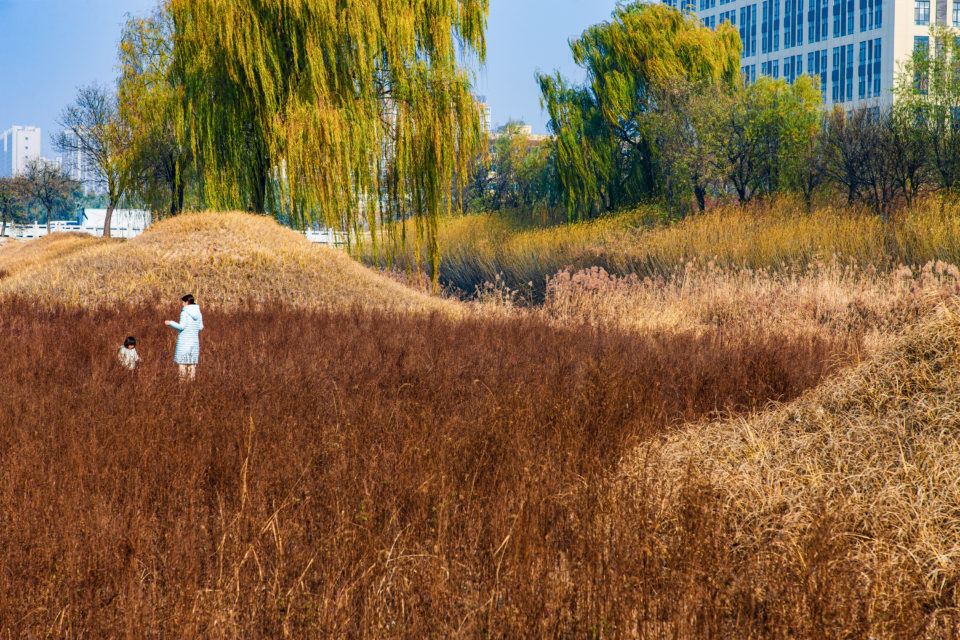That evening I had the opportunity to observe Yu in his natural habitat. He escorted me and Geng through a series of engraved metal doors into the club and across the courtyard, where the traditional stone floor had been replaced with thick glass. Once inside, he led us downstairs to a massive table under that transparent floor. As we sat in ornate, carved chairs and drank pale green cucumber juice, I looked at the moon overhead. That evening, finance ministers also visited the club, so Yu switched between our tables. Before we left, he gave me a souvenir: a heavy tome called Designed Ecologies: The Landscape Architecture of Kongjian Yu. After dinner, his driver drove us to my hotel in a brand new Mercedes minivan, where Yu got out to walk home – his daily condition.
A week later, I visited one of Turenscape’s ongoing projects: Yongxing River Park in Daxing, a distant suburb of Beijing. “Before” satellite images from three years earlier showed a straightened river bordered by steep concrete walls. “Now” images were crammed with buildings around a more spacious, meandering path for water.
The project was almost done when I saw it. About two and a half miles long and perhaps two blocks wide, the park follows the river. Workers removed concrete along the river channel and dug earth to widen the river bed. This dirt was then shaped into a large berm that ran down the middle and created two channels. The river flows on one side; the other channel has large holes of different depths that serve as filter basins. During the dry season, the filtration side is filled with partially purified wastewater from a sewage treatment plant. Wetland plants in the basins keep cleaning it, and the slow pace allows some water to filter underground. During the monsoon season, this canal is reserved for floods and the wastewater is treated industrially.
Beijing Yongxing River Greenway
TURNSCAPE
Geng and I walked a narrow concrete path along the middle embankment. Many of Turenscape’s designs feature walkways like this one that loom over wetlands so people can step into the landscape all year round and enjoy the changes from season to season. The broader banks, freshly cleared of concrete, are littered with thousands of small sedges, planted in narrow rows to hold the earth like a pointillist landscape. We passed young willows, a native stream plant that can survive floods. Elsewhere, reeds, dwarf glilyturf and other native plants stabilize the soil. Turenscape primarily uses native plants in his designs as they thrive on the water, weather, and nutrients available.
In the summer of 2020, Yu sent me photos of Yongxing River Park during the heavy summer rain. The trees and grasses had grown considerably since my visit. The canal contained a lot of water, but it was nowhere near overflowing. Turenscape does not yet have data on Yongxing’s flood capacity, infiltration rate, or water purification services, but Yu described managing this year’s monsoon as a “great achievement.”
